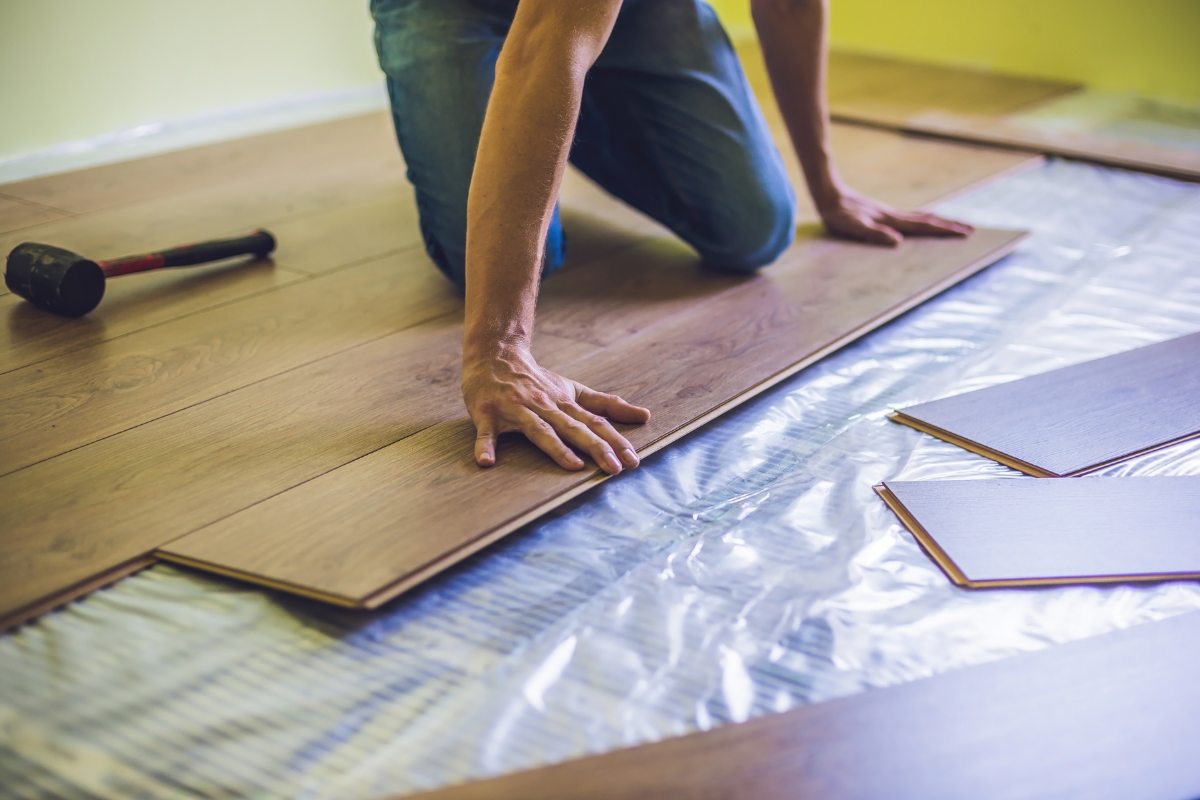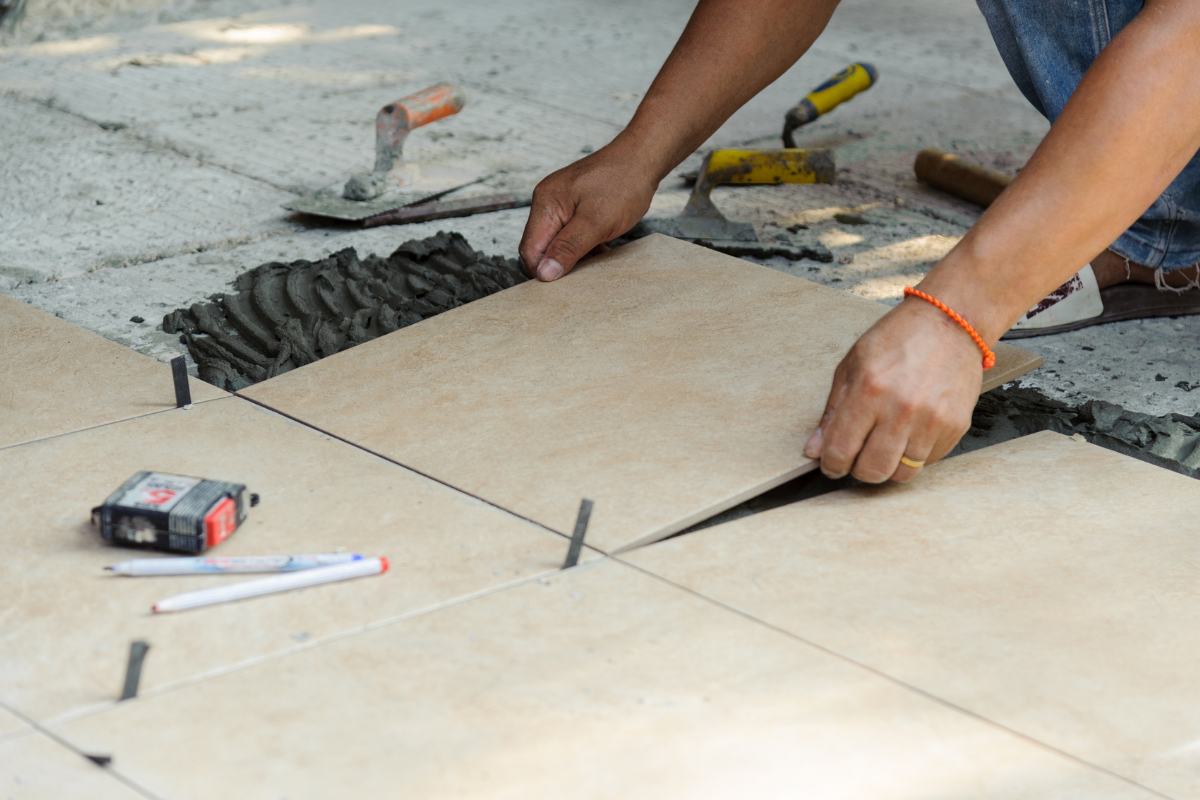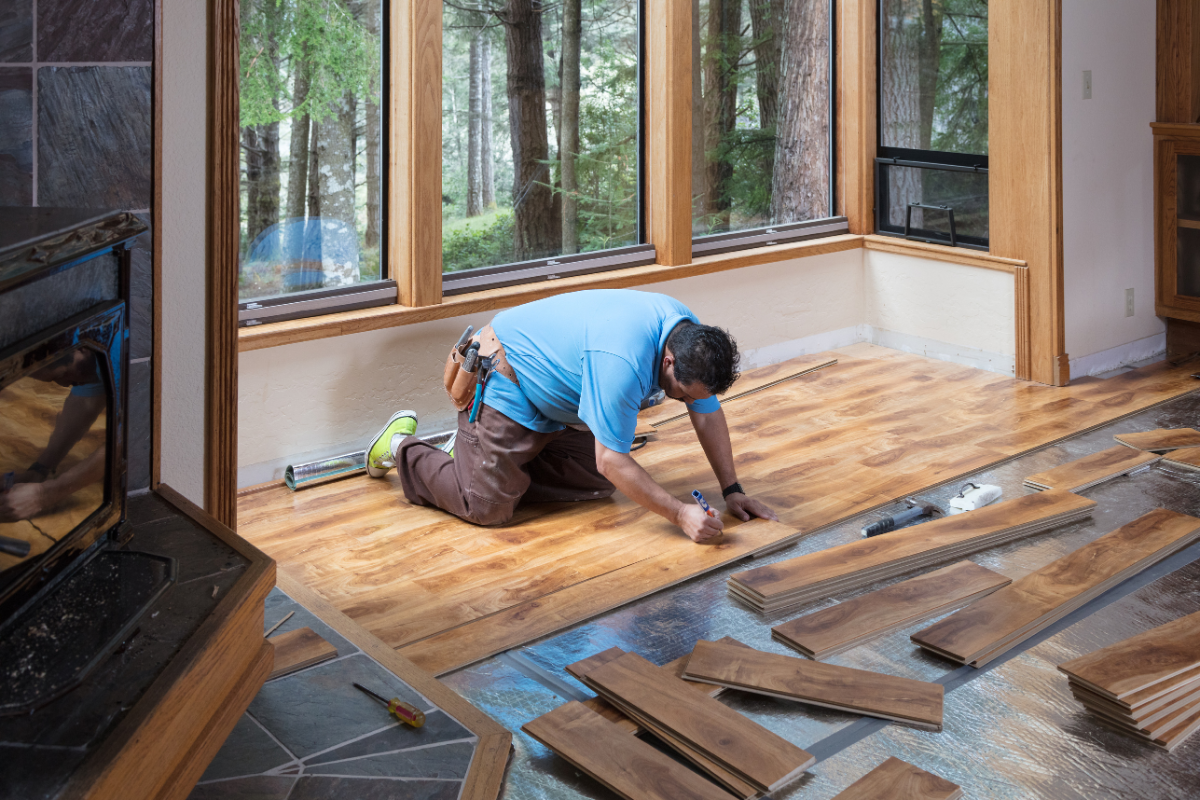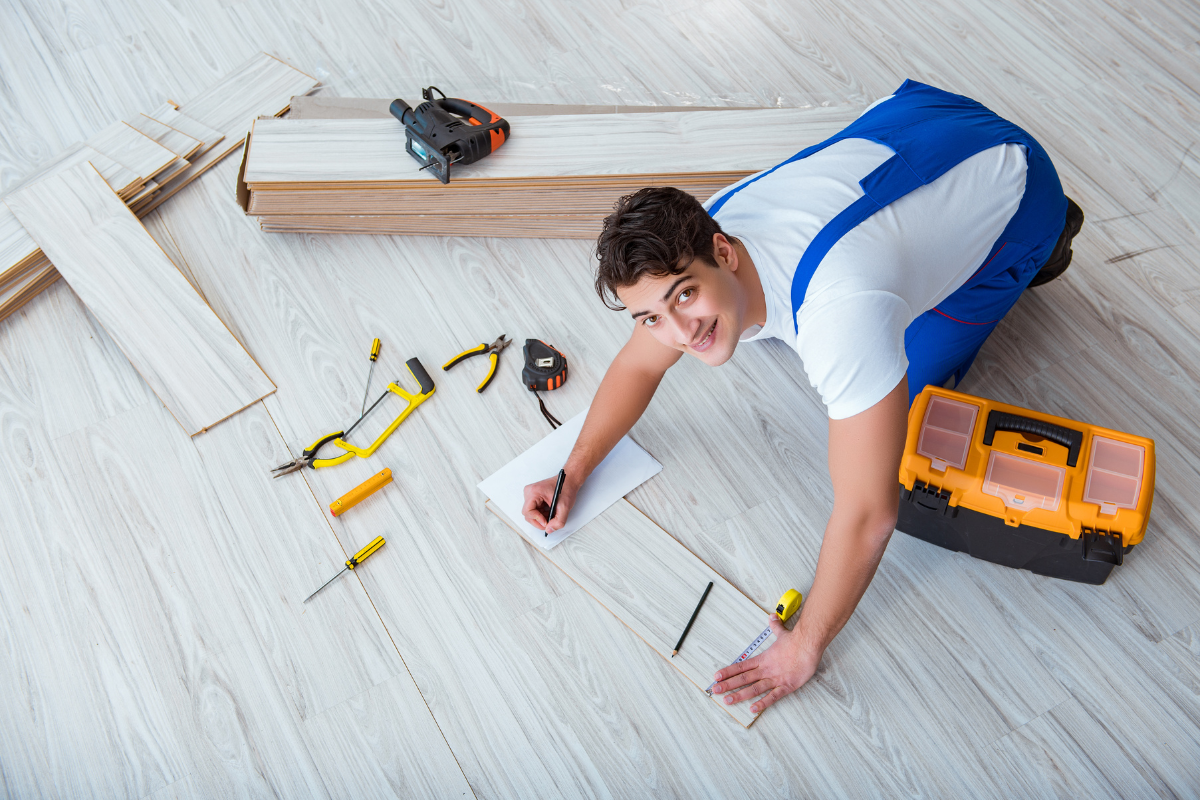
Flooring Contractor Charlotte: Balancing Style, Budget, and Durability



There are dozens of ways to cover a floor, and Charlotte has contractors who specialize in almost all of them. The challenge is not just choosing a material that looks good, but matching it to the way your home works, your appetite for maintenance, and the realities of the Piedmont climate. A seasoned flooring contractor in Charlotte will weigh moisture, subfloor condition, supply lead times, and how hard your family is on surfaces. A cheap floor that needs replacing in three years costs more than a slightly pricier installation that holds up for fifteen. The trick is finding the point where style, budget, and durability meet.
I have pulled out buckling engineered planks over damp crawlspaces, leveled condos with quarter-inch dips across the main span, and re-glued staircase nosings that never should have been face-nailed. Patterns emerge when you work on enough houses here. The summer humidity lifts edges on poor click-lock installs. UV through south-facing windows bleaches oils out of natural woods faster than many homeowners expect. Slab foundations in newer suburbs call for different moisture strategies than 1960s homes with vented crawlspaces in Myers Park or Dilworth. A good flooring company Charlotte homeowners can trust will explain those differences in plain language, then offer options with honest trade-offs.
What homes in Charlotte ask of a floor
Charlotte’s climate swings from soggy summer to dry heat in winter. The air moves, and so does wood. The typical seasonal humidity window runs from roughly 35 percent inside in winter to 60 percent or more in summer unless you actively manage it with HVAC and dehumidification. That movement squeezes joints, opens gaps, and tests adhesives. Add red clay that tracks grit, the occasional dog that doesn’t wait to go outside, and the scuffs of office chairs on casters, and you have a realistic stress test.
Houses with crawlspaces complicate the picture. If your crawlspace is vented, the subfloor will mirror outdoor humidity, which telegraphs into your flooring. I have seen engineered boards cup in a single July week after a well-meaning DIYer shut interior vents to “save cooling.” Basements rarely flood here, but they can sweat, and an unsealed slab will raise the baseline moisture a few points. That matters to carpet pads and to the vapor retarders under hardwood and vinyl. A capable flooring installation service charlotte teams provide will meter moisture in the slab and subfloor, then pick underlayments accordingly. If someone is eager to install without testing, find another flooring contractor Charlotte residents can hold accountable.
The style question is broader than color and plank width
Most people start with a vision: airy white oak planks, matte finish, seven inches wide, or perhaps a hand-scraped hickory in a darker tone. There’s nothing wrong with leading with taste. The mistake comes when fashion outruns function. Wide boards look great in open plans, but they exaggerate movement if the HVAC runs hot and cold or if the subfloor is not flat. Satin finishes hide micro-scratches better than high-gloss sheens. Character knots charm in a farmhouse style, but heavy motion lines in a living room can fight the tight grain of maple.
Think in layers. First, notice light. South and west exposure will warm and lighten woods by a shade or two over the first year. If you want a pale oak, a UV-cured or aluminum oxide finish slows change. If you go with site-finished floors, your flooring company should test samples where the sun hits and where it doesn’t. Second, match grain and pattern to room size. Small rooms tolerate narrower planks and simpler patterns. Big spaces can swallow narrow strips, but a herringbone or chevron can break up the expanse if the budget allows.
The trim, cabinet tone, and wall color all push your options. A crisp white baseboard makes warm medium browns look richer, while darker trim pairs better with buckling floors cooler neutrals or natural oils. When I lay sample boards in a space, I also set down chair leg tips, a floor register, and a piece of your area rug to judge how the ensemble reads. That moment eliminates a lot of regrets.
Where the money goes and how to spend it wisely
Material is the headline number, but labor and preparation move the needle. A box store price of 3.50 per square foot can become 7 to 8 all in once you account for tear-out, disposal, subfloor repair, underlayment, transitions, and base shoe. In a typical 1,000 square foot main level, plan on 800 to 1,200 for quality leveling if the house is older or the builder didn’t hit flatness tolerances. The best flooring installation service will be upfront about this. They will walk the space with a long straightedge, call out obvious dips, and explain what is essential versus nice to have.
I recommend this simple budget framework for most Charlotte projects. Start with a number you won’t exceed. Allocate roughly half for material, thirty percent for installation, and twenty percent for prep and finishing. If the house is newer and floors are flat, prep will shrink, and you can bump material. If you have staircases with miters and landings, installation will grow. I would rather you choose a slightly less exotic material with a top-tier installer than the other way around. The cheapest click vinyl laid poorly will telegraph joints and rocks underfoot. A mid-tier engineered wood, glued and rolled correctly, feels solid and wears well.
If you need to make trade-offs, prioritize wear layer thickness and finish quality for engineered hardwood, or the wear layer mil rating and core stability for vinyl plank. For carpet, spend on the pad and density, not just fiber. For tile, keep the tile cost reasonable and put your money into a quality uncoupling membrane and proper setting materials.
A realistic look at the main materials
Hardwood sits at the top of many wish lists. Solid hardwood can be sanded several times, but it demands tighter climate control in Charlotte. I have seen 2.25 inch red oak floors perform beautifully for 40 years, and I have seen brand-new wide planks gap by February because the house ran too dry. Engineered hardwood gives you the look of real wood with more stability. Pay attention to wear layer thickness. Two to three millimeters is serviceable, four and up is ideal if you want a future refinish. Glue-down installs on slab with proper moisture mitigation stop hollow sounds. Floating engineered floors speed installation but amplify movement underfoot and reflect subfloor imperfections.
Luxury vinyl plank is the workhorse in rentals, basements, and busy family homes. The market is crowded. In practice, a good LVP has a durable wear layer, a rigid core that resists telegraphing, and a locking system the installer trusts. I lean toward products with field-tested click profiles and backed by manufacturers with local reps. Vinyl is not invincible. It can scratch, and direct sun can heat planks enough to expand. Good expansion gaps, proper acclimation, and attention to window exposure mitigate most issues.
Tile shines in entries, baths, and laundry rooms. Porcelain beats ceramic for durability. Oversized tiles look modern, but they require a very flat substrate and precise layout. Grout choice matters. A high-quality, stain-resistant grout saves maintenance headaches. In showers, the beauty is in what you don’t see. Waterproofing and slope are the difference between a showpiece and a repair in three years. If your flooring company does tile, ask to see photos of their pan builds and membrane work, not just finished surfaces.
Carpet still has a place. For bedrooms, a dense, solution-dyed nylon or a high-quality polyester blend gives warmth without constant worry. Upgraded pad, ideally a moisture-resistant, 8-pound density, makes a bigger difference in comfort and longevity than most people expect. Stair runners add safety and reduce noise, and they can be replaced down the road without touching the hardwood or LVP underneath.
Bamboo and cork appear in design blogs, and they can work, but they swing with humidity. Strand-woven bamboo can be tough but behaves like wood in Charlotte. Cork feels great and dampens sound, yet it needs careful sealing and does not love long sun exposure. If these are your favorites, have your flooring contractor charlotte team map out maintenance reality before you commit.
Subfloor and structure: the quiet foundation of a good job
A quality flooring company sees the finish floor as the last twenty percent of the job. The first eighty sits below your line of sight. Plywood thickness, joist spacing, slab flatness, and moisture all feed into the plan. An eighth of an inch dip across two feet feels like a small wave when you walk it. The National Wood Flooring Association recommends a flatness of 3/16 inch over 10 feet for hardwood. Many homes miss that by a hair without targeted fixes.
In older Charlotte neighborhoods, subfloors may be 1 by planks set diagonally under a layer of plywood. Those assemblies move differently than modern OSB over engineered joists. If you hear squeaks now, they will not magically disappear under new flooring. Screwing the subfloor to the joists, adding adhesive, and shimming where needed pays off. On slabs, the conversation shifts to vapor emission. Calcium chloride tests or in situ probes tell you whether you need a vapor barrier adhesive or a full mitigation layer. A professional flooring installation service charlotte providers offer will present the test results and options with costs, not skip steps to look competitive on paper.
Transitions and thresholds deserve attention. Doorways where tile meets wood, or LVP meets carpet, should be planned around the thickest product so that you avoid trip lips and awkward reducers. In open concepts, decide where the line breaks before day one. I have pulled and relaid four rows of planks because a kitchen island was off by half an inch and the client could see it from the sofa. That pain is avoidable with blue tape on the floor and a tape measure before any adhesive gets opened.
Durability is a system, not a feature
Clients ask for “scratch-proof.” It doesn’t exist. You can, however, design a floor that shrugs off normal life and wears gracefully. The components are simple. The right material for the room. A finish or wear layer that resists abrasion. An installation that locks out moisture and supports the floor evenly. The daily practices that control grit and humidity.
I have seen aluminum oxide finishes keep a busy family’s white oak looking fresh for years, with only micro-marring in the zones where a rolling desk chair lived. In contrast, an oiled floor in the same scenario would need a maintenance oil in year two. That is not a knock on oils. They look fantastic and feel natural underfoot. They just ask for different care: felt pads on chair legs, a mop with the right soap, and a mindset that accepts patina.
For vinyl plank, durability hinges on quality of core and click, how well the installer handled cuts and expansion, and whether furniture has felt on feet. The good news is that in a flood, vinyl often survives after drying, while engineered hardwood may need replacement depending on saturation.
Tile durability rides on substrate prep and grout. A hollow tap sound in large-format tile often signals a void in thinset. That can crack later under a concentrated load. If your tile will see heavy traffic, ask your flooring company charlotte team whether they use a medium-bed mortar for big tiles and how they verify coverage.
Real numbers you can plan with
In recent projects around Charlotte, I have seen engineered oak of solid quality run 5 to 9 per square foot for material, with glue-down installation adding 3 to 5 depending on prep. Solid hardwood material varies broadly, but the installed cost with sanding and finishing typically lands in the 10 to 15 range for straightforward layouts, more for stair work and elaborate borders.
Luxury vinyl plank spans 2.50 to 5 for decent material, and 2 to 4 for installation, including basic underlayment. Tile material can be modest, say 3 to 6 per square foot, but labor often exceeds the material, especially in tight bathrooms and showers where waterproofing and layout complexity matter.
Carpet can look cheap on flyers, yet a good result is rarely less than 4 to 6 installed for bedrooms, stepping up with patterned goods and stair runners.
Prices drift with market conditions. Supply chain bumps add lead time for particular finishes. A capable flooring company will hold pricing long enough to schedule and will tell you up front if a chosen product is back-ordered. If a deal looks far below these ranges, ask what you’re not getting. Usually it is prep, quality adhesives, or a finish that lasts.
When flooring repair beats replacement
Not every problem demands a tear-out. Spot squeaks, loose transition strips, a handful of cupped boards near a patio door, or a run of cracked grout around a tub can often be fixed. A competent flooring repair charlotte technician brings moisture meters, clamps, repair adhesives, color-matched fill, and, most importantly, the judgment to stop damage from spreading.
A cupped board from a one-time spill will often relax with time and proper humidity, then sand flush if you have refinishable wood. Persistent cupping suggests ongoing moisture intrusion, which means you should solve the source first. For engineered floors with a damaged board in the field, plank extraction and replacement is delicate but doable if the installer left enough expansion and the product is still available. If not, a repair may be visible. In tile, a cracked tile set over a structural crack can be replaced if the movement is addressed with a membrane. Regrouting without solving movement only kicks the can.
Repairs shine when the rest of the floor is sound and you can match material. They fail when the underlying cause remains or the floor is at end of life. A flooring installation service can estimate both paths so you’re not betting blind.
Working with a local pro, and what to ask before you sign
Relationships matter in trades. A reputable flooring contractor charlotte homeowners recommend is one who shows up, explains, and stands behind work. The first meeting should feel like a consult, not a pitch. They should ask how you live in the space, whether pets share the home, how strict you are about climate control, and what your maintenance habits look like. They should bring samples, but more importantly, they should bring questions.
Here are a few focused questions that sharpen the conversation quickly:
- What moisture tests will you perform on my subfloor or slab, and what numbers would require a different approach?
- How flat is my floor today, and how will you correct it? What tolerance do you aim for?
- Which installation method do you recommend for this product in my home, and why?
- What does your warranty cover, and what maintenance keeps it valid?
- What parts of the job tend to surprise clients on cost or time, and how do you handle them?
Notice how each question forces specifics. A good flooring company will answer from experience, not from brochures. If everything sounds perfect, ask for a story about a job that ran into trouble and how they resolved it. You will learn more about their character from that one answer than from any portfolio shot.
Scheduling, dust, and living through the work
Installing floors disrupts life. Good planning lowers the stress. Tile and glue-down wood cure times mean you cannot move back heavy furniture the same day. On site-finished hardwood, sanding and sealing usually take three to five days for the main coat cycles. Oil-modified finishes smell and need ventilation. Waterborne finishes cost more but cure faster and smell less. LVP and prefinished wood install faster, but moving appliances requires care, especially over fresh planks.
Dust control separates careful contractors from the rest. Expect tables saws outside, miter saws under vacuums, and sanders with dust capture. Expect plastic sealing of work zones if heavy cutting or sanding happens inside. A clean job says you hired the right flooring installation service.
Pets and kids add complexity. I have boarded dogs for clients on finish days and set up temporary ramps for cats to reach litter boxes. Those details are small, but they are the facts of living through a project. Ask for a daily plan so you know when to be home, when you must be out, and when floors can be walked on in socks.
Maintenance that saves money later
No floor is maintenance-free, but some routines punch above their weight. Keep interior humidity roughly 40 to 55 percent year-round. That single habit protects wood joints and reduces movement. Put good mats at entries and vacuum them weekly. Grit is sandpaper under your shoes. Felt pads under chairs and stools cost little yet prevent eyesore scratches. Avoid steam mops on wood and vinyl, and use cleaners the finish manufacturer approves. Oil soaps on polyurethane finishes can dull the sheen. Vinegar on stone etches. Stain-resistant grout still benefits from a pH-neutral clean and prompt attention to spills.
For engineered wood, expect a maintenance coat or a screen and recoat in seven to ten years if traffic is high. For vinyl, inspect click seams annually near sliding doors where heat builds. For tile, check threshold replacement caulk at wet transitions each year. For carpet, a professional clean every 12 to 18 months extends life and keeps warranties valid.
A good flooring company charlotte teams sometimes bundle a maintenance visit a year after install. If yours offers it, accept. A trained eye will catch a small issue, like a loosening transition, before it grows into a repair.
A few lived examples from Charlotte homes
In a two-story in Ballantyne with a ventilated crawlspace, the homeowners wanted wide-plank solid white oak through the main level. The crawlspace ran humid in summer, despite the HVAC. Rather than talk them out of the look, we adjusted the plan. We encapsulated the crawlspace, added a dehumidifier, and installed engineered oak with a 4 mm wear layer glued over a vapor retarder adhesive. The cost increase for crawlspace work was offset by savings on material compared to solid wood. Three years on, the floors sit flat, and the humidity in the house stays stable.
A South End condo on a slab had a long dip from kitchen to living room, about a quarter inch over eight feet. The client chose a mid-range LVP to keep costs down. We invested the extra money in leveling compounds and a premium underlayment. The result felt solid, with no bounce or percussion sound, and the floor still reads straight along the baseboards. If we had spent that money on a thicker vinyl and skipped leveling, the eye would be drawn to undulating lines.
In a Myers Park bungalow, original red oak floors had turned orange and were riddled with squeaks. The homeowner wanted to keep them. We face-screwed from below where accessible, added screws from above and plugged in strategic areas, then sanded to bare wood and finished with a low-gloss waterborne polyurethane in a natural tone. The squeaks dropped by ninety percent, and the orange cast disappeared. That flooring repair approach preserved character and avoided new wood costs.
Choosing the right partner in a crowded field
There are many options when you search for a flooring company or a contractor to handle a flooring installation service Charlotte wide. Some cost of floor repair Charlotte NC businesses excel at retail sales and outsource installation. Some crews are outstanding installers but light on design advice. A few offer both and handle flooring repair charlotte needs in-house, which is useful for warranty and maintenance. You can have a good experience with any of these models if you match your needs to their strengths.
If you want hand-holding on style with lots of samples and in-home mockups, pick a company with a full showroom and a dedicated design person. If your project is heavy on technical issues like leveling, moisture mitigation, or complex tile, lean toward a contractor with lead installers who carry certifications and can show photos of in-progress technical work, not just finished rooms. When schedules are tight, ask directly about crew size and how they handle overlaps with other trades. Floors installed before painters finish can be protected, but it takes planning and serious floor protection, not just paper.
Finally, trust your gut on communication. You will spend a few days to a few weeks working with this team. The best companies respond quickly, document changes in writing, and stay accessible after the last coat dries. A contractor who is transparent about the ugly parts, like delays when a product arrives with color variation, is the one you want in your corner.
The balance point is different for every home
Style is personal. Budget is finite. Durability is non-negotiable, but it has flavors. Some clients accept patina as a badge of life lived. Others prefer a hard, quiet finish that looks the same every year. The Charlotte climate adds a variable you cannot ignore. When those realities meet a clear-eyed plan, the result is a floor that suits the house and the people who live there.
A thoughtful flooring company helps you find that balance. They listen before they spec. They test before they install. They prepare the base so the finish can shine. Whether you are choosing engineered white oak for a sunlit family room, a tough vinyl plank for a basement play space, or porcelain tile for a high-traffic entry, the same principles hold. Fit the material to the space. Spend where it counts. Respect the subfloor. Keep moisture and grit in check. And when the unexpected happens, lean on a local team that knows how to make it right.
PEDRETTY'S CERAMIC TILE AND FLOORING LLC
Address: 7819 Rolling Stone Ave, Charlotte, NC 28216
Phone: (601) 594-8616